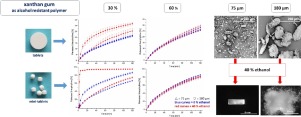- Home
- Blog
- News
- Basics
- Sources
- Agencies, Regulatory & Organisations
- CERSI Excipients Browser
- Excipient Report
- Excipient DMF List
- EXCiPACT Certified Companies
- Excipient Documentation
- Excipient EINECS Numbers
- Excipient E-Numbers
- FDA Inactive Ingredient List
- FDA GRAS Substances (SCOGS) Database
- IPEC Americas
- USP - U.S. Pharmacopeia
- Definitions
- Whitepapers / Publications
- Supplier
- Services
- Media
- Events
- 1st pharmaexcipients Poster Award
- Event Calendar
- Events featured by pharma-excipients
- 4th Annual Formulation & Drug Delivery Congress
- DDF Summit
- ExcipientFest Americas
- ExcipientFest Asia
- Global CompliancePanel
- International Conference and Exhibition on Pharmaceutics & Novel Drug Delivery Systems
- Formulation & Drug Delivery USA Congress
- Laboratory Medicine 2018
- Making Pharmaceuticals Europe
- Making Pharmaceuticals Exhibition
- Pharma Integrates
- PharmaExcipients China @CPhI China
- TTC Technology Training Center
- Jobs
- Online Sourcing
- Contact
05. February 2018
Children requiring cortisol replacement therapy are often prescribed hydrocortisone doses of
2.5 mg, but as this is commercially unavailable 10 mg tablets, with functional break lines, are split commonly in an attempt to deliver the correct dose. This study aimed
to determine the dose variation obtained from quartered hydrocortisone tablets when different operators performed the splitting procedure and to ascertain whether better uniformity could be attained from mini-tablets as an alternative f
03. January 2018
Mini tablets are solid dosage forms with a diameter ≤ 3 mm and separated into subunits of conventional tablets. Production methods are similar to standard tablets, but the only difference is the use of multiple punches. They have advantageous for use in patients suffering from swallowing difficulty and receiving multiple drug treatment.
13. December 2017
The vulnerability of controlled release formulations when co-ingested with alcohol represents a current major concern of regulatory agencies. Dose dumping might occur when drugs and/or excipients exhibit higher solubility in ethanolic solutions compared to water.
05. January 2016
“Mini-tablets” (MTs) are tablets of diameter ≤ 3 mm and have been widely studied and developed. However, reports comparing MTs with other tablet formulations are few. We wished to evaluate the ease of taking a MT quantitatively in comparison with an orally disintegrating mini-tablet (ODMT), conventional tablet (CT) and conventional orally disintegrating tablet (ODT). Four types of tablets were prepared. We prepared tablets of two diameters (3 mm for MTs and ODMTs vs. 8 mm for CTs and...
10. July 2015
Children may be unable or unwilling to swallow medicines. In order to avoid or accommodate any such problems, parents may decide to administer medicines other than intended. The aim of this study was to investigate how parents administered four oral placebo formulations to infants and preschool children and how the applied methods correlated with child acceptability. More
05. March 2015
Oral drug delivery is a non-invasive and therefore a very convenient route of administration. Orally disintegrating dosage forms, like soluble films and (mini-)tablets, appear promising for use in the pediatric population. New guidance for the development of pediatric medicines has been published, which provides considerations on how pediatric products should be designed. .. more on http://link.springer.com/article/10.1208/s12249-015-0313-1



